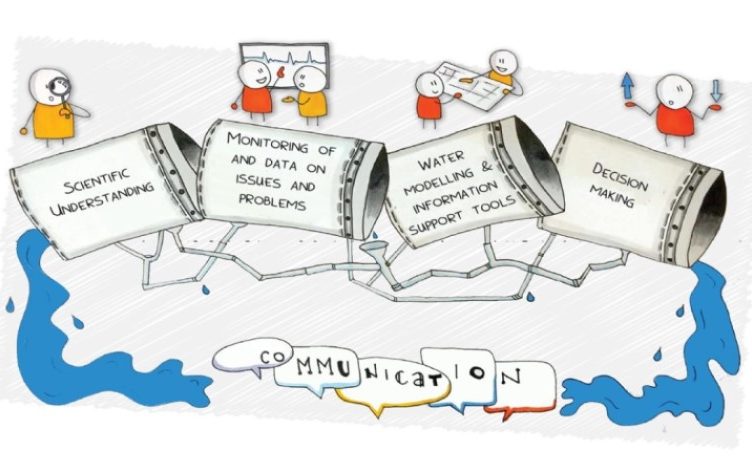
05/12/2024
Event Summary: Overview of water quality modelling projects from the Queensland Water Modelling Network with Callym Dunleavy
Read more
On Wednesday 1 June, the QWMN 3CP team and eager participants from around the globe, were joined online by one of our regular collaborators, Barbara Robson (AIMS) and a team of experts in Wendy Sharples (BoM) and Juan Ortiz (AIMS), to discuss and workshop the complexity in available climate data and its real-world modelling application.
This 2 hour workshop was opened by our own Piet Filet who welcomed us all and introduced presenters and participants. We were joined on the day by colleagues from across Queensland, Australasia, and America and Africa, working in or interested in modelling and how we can apply this complex set of information.

Our first presenter, Barbara walked us through a brief introduction to the significance of our changing climate and the need to step away from relying on historical conditions for baseline scenarios when considering future change projections. Barbara highlighted some of the current IPCC projected trends for Australasia and introduced guest speaker, Wendy Sharples.
Wendy, Team Leader – Hydrological Applications at the Bureau of Meteorology (BoM), provided a substantial overview of Australia’s hydrological data trends and projections. Wendy’s presentation, Charting Australia’s changing hydrological extremes from the past, to the present, through to the future, was a detailed summary of Australia’s important climatic drivers and trends unfolding for bio-regions around the country. She shared the hydrological extremes across Australia’s regions looking at historical data, and current seasonal forecasting, from cyclones to bushfires and floods through to projected influence of future climatic variability. As difficult as change can be to witness and predict, it is here to stay and thankfully, the BoM provide public access to a whole range of records and forecasting tools to support collaborative research and analysis. As the team lead of the hydrological applications team, Wendy is very keen to collaborate with you all, to further develop the current Australian Water Outlook offerings (contact Wendy.Sharples@bom.gov.au).
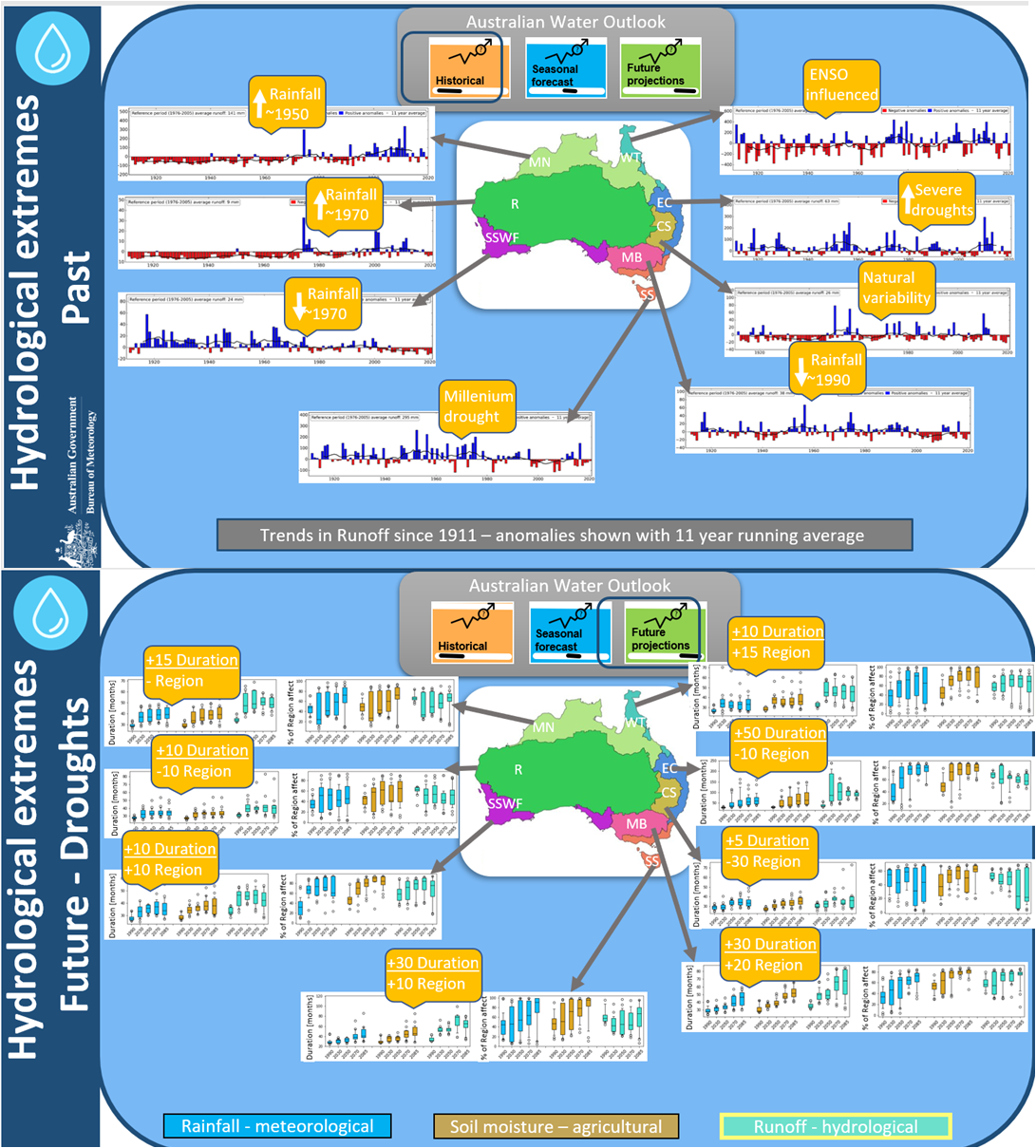
Slides from Wendy’s presentation illustrating past rainfall anomalies and future drought predictions
Juan Ortiz – Senior Scientist, Reef Restoration and Adaptation Program, was up next with his presentation, Upskilling to scale down: integrating ecosystem models, climate projections and connectivity to help manage coral reefs. In this presentation, Juan shared the significance of having members on a project that can bridge the gap between what the project team can deliver and what a client is looking for. He walked us through an example coral project where, finding a common language, and the right questions to ask, were key to understanding reef connectivity and forecast coral variability. He finished his presentation with a reminder to participants to upskill to develop the ability to think outside the box and be able to translate your abilities into the needs of a client and vice versa.
Juan commented that, climate change is no longer just a prediction; we are seeing the changes now. Time pressures are coming from the need for urgent action and project implementation within shorter and shorter time frames, having the effect of turbo charging collaboration and project outcomes.
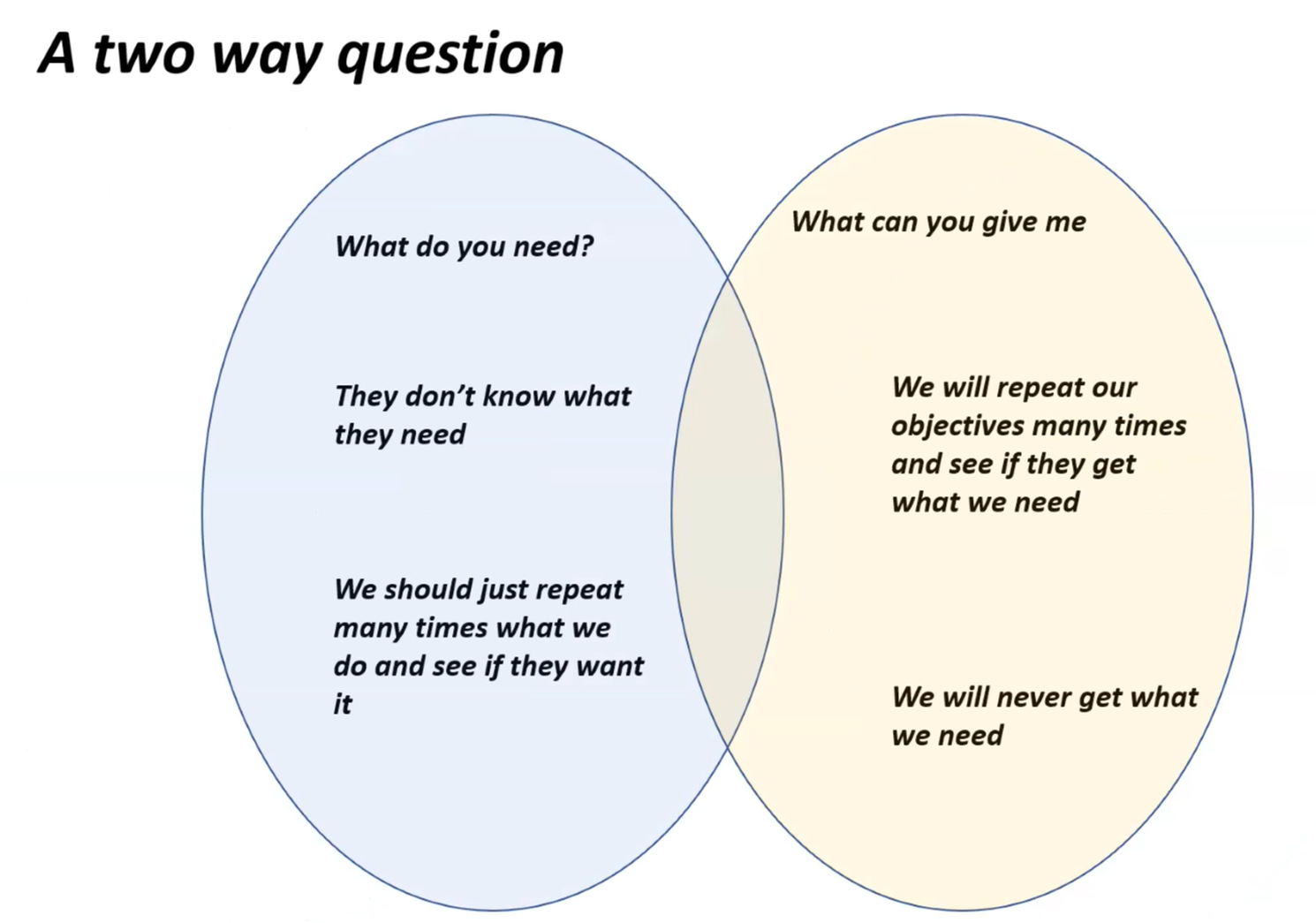
Slide from Juan’s presentation: the collaborative overlap of a project team and client
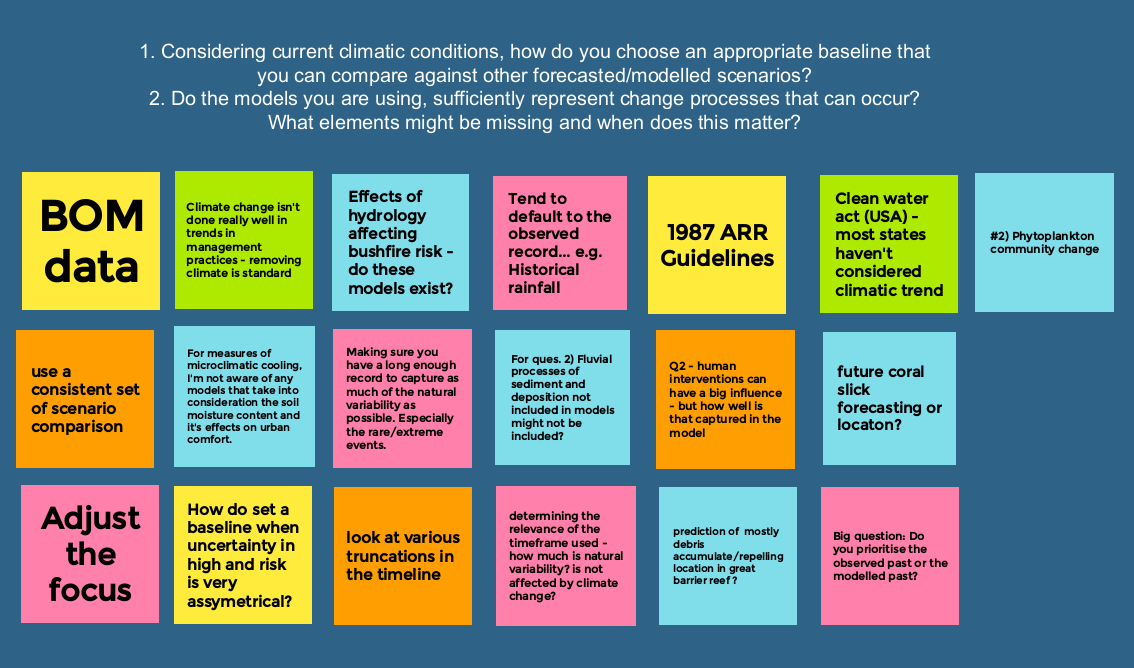
Participants were then divided into break-out rooms to discuss one of the following questions:
Considering current climatic conditions, how do you choose an appropriate baseline that you can compare against other forecasted/modelled scenarios?
Do the models you are using, sufficiently represent change processes that can occur? What elements might be missing and when does this matter?
Outcomes from this collaborative discussion highlighted some gaps in awareness of or access to required information as well as some big questions around effective prioritisation and how well models capture difficult to measure concepts such as human interventions.
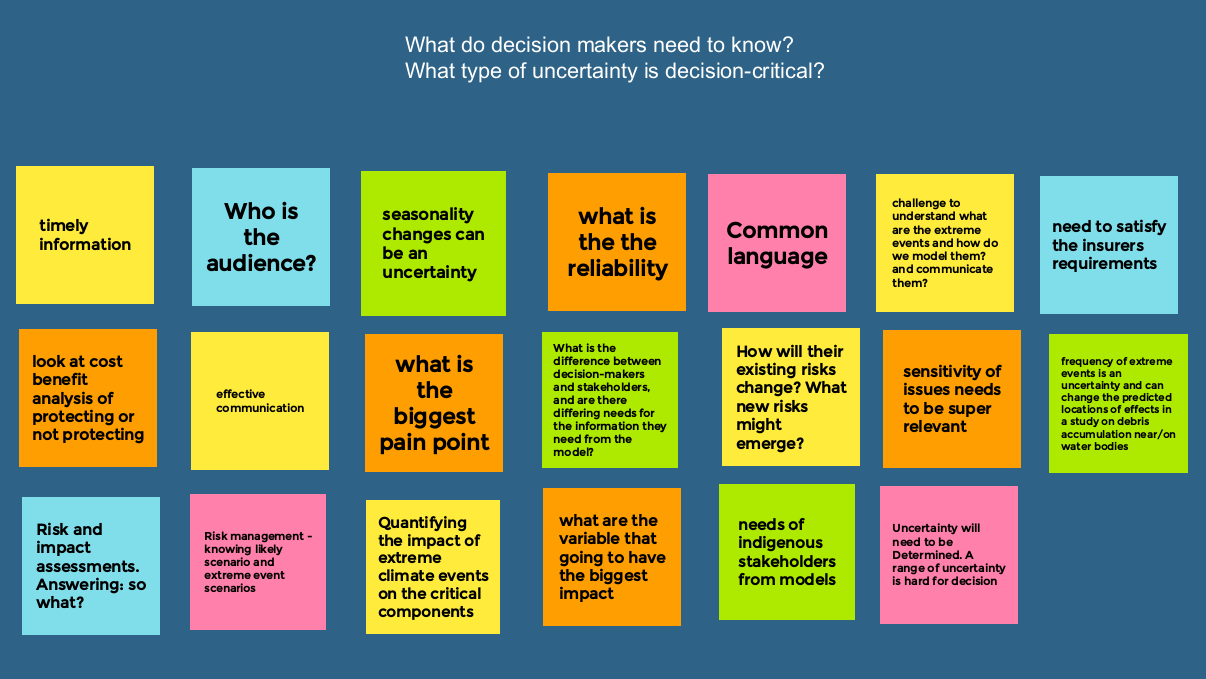
Activity 2 involved another breakout discussion on the questions:
What do decision makers need to know? What type of uncertainty is decision-critical?
This discussion raises some of the important questions to ask to make sure you are fully and attentively answering your audience when undertaking this type of work. Communication, collaboration and sensitivity of variables were just some of the highlighted concepts presented.
We thank Barbara, Wendy and Juan for their commitment and time to this important topic and all our participants for their active involvement in the ongoing discussion around forecasting climate.
The Bureau of Meteorology has recently brought hydrological sciences into the research fold, creating three teams; one dedicated to hydrological model development in an earth system framework, one dedicated to surface observations and data assimilation, and one dedicated to hydrological applications, seamless water services and water related hazards. The hydrological applications team have developed the Bureau’s national seasonal hydrological forecast and hydrological projections, two components of the Australian Water Outlook service which was released at the end of 2021. Wendy is the team lead of the hydrological applications team and is very keen to collaborate with you all to further develop the current Australian Water Outlook offerings.
Hydrological projections – seasonal forecasts and data:
https://geonetwork.nci.org.au/geonetwork/srv/eng/catalog.search#/metadata/f6683_9441_8676_1139 –
Bureau of Meteorology, Australian Water Outlook
https://awo.bom.gov.au/about/overview
Link to the Presentations from the speakers at this workshop:
Access Passcode: Cn1CVB!#